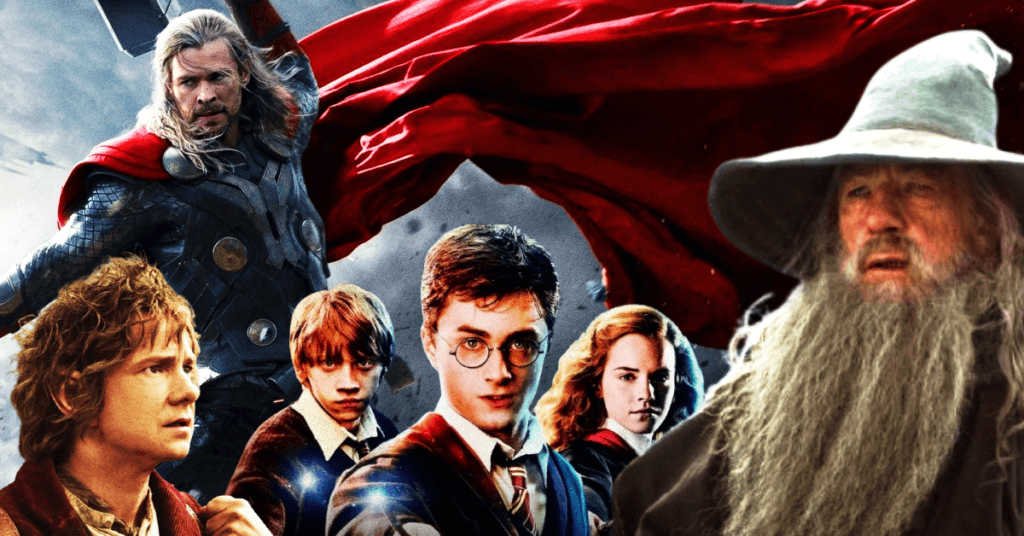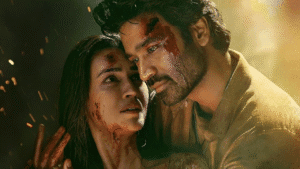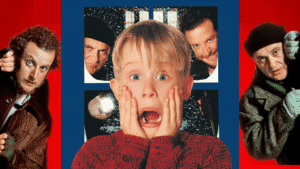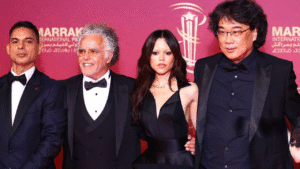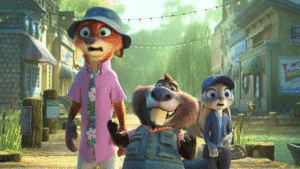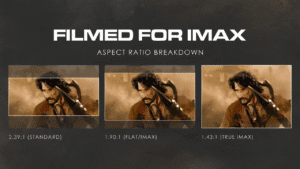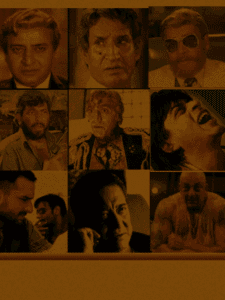From the dawn of storytelling, mythology in cinema has played a crucial role in shaping narratives that explore human nature, morality, and the mysteries of existence. These ancient tales, filled with gods, heroes, and extraordinary events, have found their way into every form of artistic expression, including cinema. In filmmaking, mythology is far more than just a source of inspiration; it is a foundational element that influences storytelling structures, character development, thematic depth, and world-building. Modern films may not always adapt myths directly, but their narratives continue to follow mythological frameworks, proving that these ancient stories remain relevant even in the ever-evolving landscape of cinema.
The Mythological Foundation of Storytelling in Film
One of the most significant ways mythology has shaped filmmaking is through its influence on narrative structure. Many films, consciously or unconsciously, follow the storytelling framework of mythology. The most notable example is the Hero’s Journey, a pattern identified by mythologist Joseph Campbell, which outlines a universal path that heroes take in myths across different cultures. This structure, which involves a protagonist answering a call to adventure, undergoing trials, receiving guidance, facing a climactic struggle, and ultimately returning transformed, has become a fundamental blueprint for storytelling in cinema.
Even films that are not directly based on mythology often adopt this structure to create engaging narratives. From fantasy epics to science fiction sagas, the Hero’s Journey provides a sense of progression and transformation that makes stories compelling. The reason filmmakers return to this pattern time and again is because it resonates on a deep psychological level, reflecting the struggles and triumphs of human existence. When audiences watch a hero embark on a journey of self-discovery and growth, they see elements of their own lives mirrored in the story, making mythology an essential storytelling tool.
Thematic Depth and Symbolism Drawn from Mythology in Cinema
Beyond structure, mythology enriches films by introducing timeless themes that transcend cultures and generations. Filmmakers use mythology to explore fundamental aspects of the human condition, such as the battle between good and evil, the inevitability of destiny, the consequences of hubris, and the nature of transformation. These themes have been central to mythology for centuries, and their presence in films adds a layer of philosophical and emotional depth that elevates storytelling.
Many films use mythology not just as a literal reference but as a thematic foundation. The idea of destiny, for example, is a recurring theme in mythology, where characters are often bound by prophecy or divine will. Cinema frequently uses this concept to examine questions of free will versus fate, with protagonists struggling to either embrace or defy their predetermined paths. In Harry Potter, Harry is destined to face Voldemort, yet his choices define his journey. Similarly, mythology frequently explores the theme of transformation, whether it be physical, spiritual, or moral. Films often depict characters undergoing trials that force them to evolve, much like the mythical heroes of the past. In The Dark Knight (2008), Bruce Wayne’s transformation into Batman is not just physical but psychological, representing a mythic rebirth driven by suffering and purpose. This use of mythology allows filmmakers to craft narratives that feel both ancient and timeless, ensuring that audiences connect with them on a profound level.
World-Building and the Mythological Framework of Cinematic Universes
Another reason mythology in cinema is so integral, is its role in world-building. Fantasy and science fiction films, in particular, rely on mythological frameworks to create immersive and believable worlds. By drawing from existing myths or constructing entirely new ones, filmmakers add layers of authenticity to their fictional settings. This is evident in many cinematic universes, where mythological elements provide a sense of history, culture, and lore that deepens the audience’s engagement with the story.
The Lord of the Rings trilogy (2001-2003) is a prime example of this, as J.R.R. Tolkien’s Middle-earth is deeply rooted in Norse, Anglo-Saxon, and Celtic mythology. The films influenced by mythology are often designed with these deep historical roots in mind. The Marvel Cinematic Universe (2008–present) incorporates mythological gods and demigods, such as Thor and Loki, blending ancient lore with modern superhero narratives. Even futuristic films like Blade Runner 2049 (2017) borrow from mythology to add depth to their world, infusing their stories with themes of creation, gods, and artificial intelligence. Mythology in cinema provides a structured way of constructing these worlds, offering filmmakers a template for how civilizations might function, how their gods and heroes might be revered, and how their conflicts might unfold.
The Influence of Mythology on Character Archetypes
Characters in films often reflect archetypes that have existed in mythology for centuries. The hero, the mentor, the trickster, the villain—these figures have appeared in myths across cultures and continue to populate modern films. Their presence in cinema is not merely coincidental; these archetypes serve as fundamental representations of different aspects of the human psyche. Filmmakers use these mythological figures to craft characters that audiences can immediately recognize and connect with, even if the setting or plot is entirely new.
The hero, for example, is a character who undergoes trials and emerges stronger, often embodying values such as courage, resilience, and sacrifice. In The Matrix (1999), Neo’s journey from an ordinary individual to “The One” mirrors the mythological transformation of a hero discovering their destiny. The mentor figure serves as a guide, providing wisdom and knowledge that help the hero navigate their journey, much like Yoda in Star Wars: The Empire Strikes Back (1980). The trickster challenges societal norms, introducing chaos and unpredictability, as seen in Loki’s character in Thor: Ragnarok (2017). The villain, or shadow figure, represents the darker aspects of human nature that must be confronted and overcome, a concept epitomized by Darth Vader in Star Wars: A New Hope (1977).
Mythology’s Role in Visual and Symbolic Storytelling
In addition to narrative and thematic influences, mythology in cinema plays a vital role in the visual language. Filmmakers often incorporate mythological symbols, settings, and imagery to enhance their storytelling. Symbolic motifs such as fire, water, light, and darkness frequently appear in mythology, representing transformation, rebirth, wisdom, or destruction. These symbols continue to be used in films to evoke powerful emotions and create a sense of mythic grandeur.
Cinematic worlds often borrow the aesthetics of mythological landscapes, whether it be the heavenly realms of gods, the underworld of lost souls, or enchanted forests filled with mystical beings. In Thor (2011), Asgard is depicted as a golden, celestial realm inspired by Norse mythology, reinforcing its divine significance. The use of elaborate costumes, armor, and ancient script-like symbols in films such as Gladiator (2000) and Troy (2004) further reinforces the mythological connection, immersing audiences in a world that feels both familiar and fantastical.
Why Mythology in cinema Will Always Be Integral to Filmmaking
Despite the evolution of cinema and the emergence of new storytelling techniques, mythology remains a fundamental aspect of filmmaking. Its universality ensures that mythological narratives are accessible to audiences worldwide, offering a shared language through which filmmakers can communicate profound ideas and emotions. Moreover, mythology provides an endless source of inspiration, allowing filmmakers to continuously reinvent and reinterpret age-old stories in new and innovative ways.
Films influenced by mythology are not just a reference point for cinema; they are a foundational element that influences storytelling, character development, thematic exploration, and world-building. Its ability to convey universal truths and timeless struggles ensures that it remains deeply embedded in the filmmaking process. From the grandest epics to the most intimate character-driven dramas, mythology provides the framework upon which great stories are built. As the film industry continues to evolve, mythology will remain a guiding force, proving that the stories of the past are not relics; they are the very foundation of the cinematic future.
Read More:

